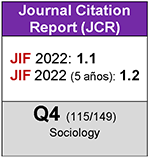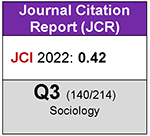Resilient homophily patterns in youth friendship networks: a case study using a computer simulation experiment
DOI:
https://doi.org/10.5477/cis/reis.177.43Keywords:
Coleman’s Homophily Index, Friendship Networks, Resilience, Agent-Based Simulation, Computational SociologyAbstract
This paper deals with how to recognise if the patterns of homophily found in a social network are resilient to small disturbances that may occur in that network. Data from a survey of students in a secondary school in the Canary Islands were replicated using an agent-based model. The model calculated homophily indices and their statistical significance and then simulated small alterations in the distribution of links. The results clearly show that some homophily indices resist these kinds of perturbations and others do not. Evidence suggests that the distribution of individuals across the social network communities is a key factor in explaining why certain patterns of relationships are more resilient than others.
Downloads
Downloads
Published
How to Cite
Issue
Section
License
Copyright (c) 2024 Revista Española de Investigaciones Sociológicas

This work is licensed under a Creative Commons Attribution-ShareAlike 4.0 International License.
Permite Compartir — copiar y redistribuir el material en cualquier medio o formato, Adaptar — remezclar, transformar y construir a partir del material para cualquier propósito, incluso comercialmente.








